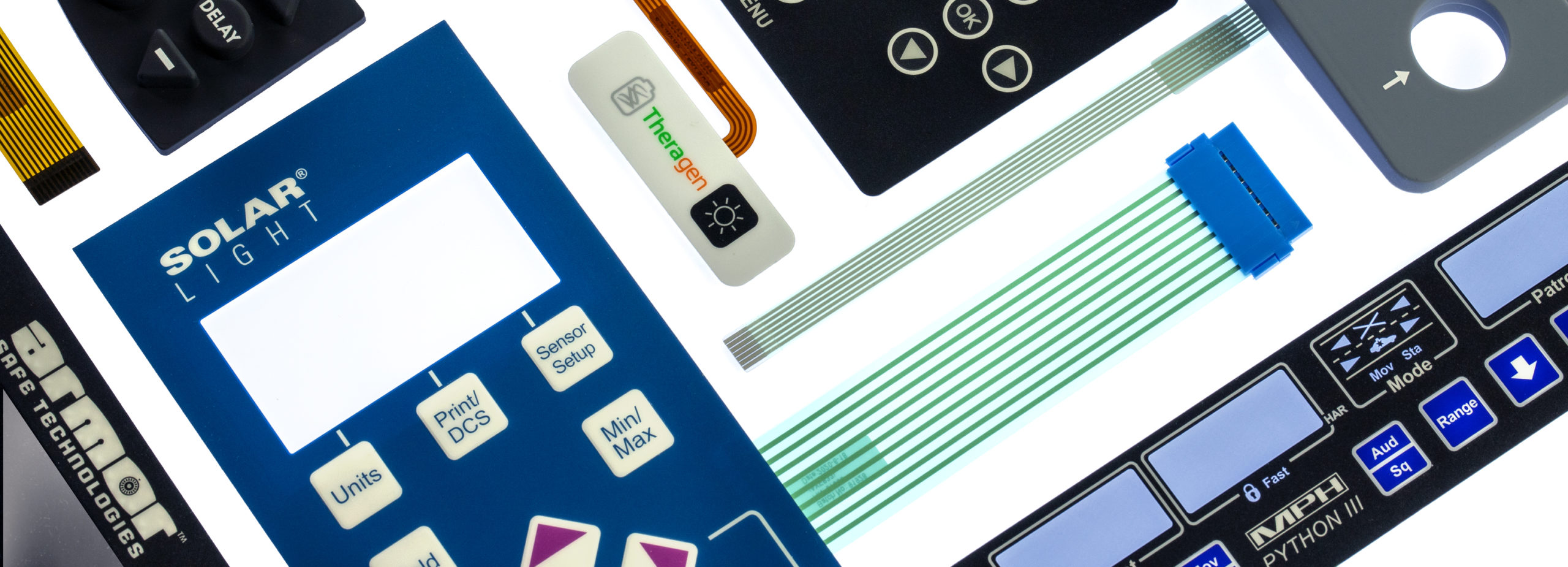How Membrane Switches Are Shaping the Future of Electronic Interfaces
How Membrane Switches Are Shaping the Future of Electronic Interfaces
Blog Article
Recognizing Membrane Changes: The Key to Long Lasting and Reputable Controls

What Are Membrane Layer Buttons?
Membrane layer switches are a sophisticated option in the world of interface modern technology, combining functionality and design effortlessly. These gadgets work as an interface between individuals and digital systems, incorporating numerous parts right into a small layout. Typically constructed from flexible, thin layers of materials, membrane layer buttons are made to reply to touch, making it possible for individuals to communicate with equipment and electronic devices efficiently.
The main elements of a membrane switch include a printed circuit layer, graphic overlay, and a spacer layer that avoids unintentional activation. The graphic overlay can be customized to mirror brand identity or user choices, boosting visual appeals while guaranteeing use. Membrane layer buttons are frequently used in various applications, including clinical devices, consumer electronic devices, and industrial equipment, owing to their resilience and resistance to environmental aspects such as dampness and dust.
One of the vital advantages of membrane buttons is their capacity to withstand damage, making them optimal for high-traffic environments. In addition, they are light-weight and require marginal space, permitting cutting-edge styles in product development. Overall, membrane layer switches stand for a effective and sensible option for modern-day electronic interfaces, marrying modern technology with user-centric style concepts.
Exactly How Membrane Layer Changes Job
The operation of membrane layer changes rest on an easy yet reliable system that converts individual input right into electronic signals. These buttons contain several layers, generally consisting of a visuals overlay, a spacer layer, and a circuit layer. When an individual presses the button, the top layer flaws, allowing a conductive aspect in the circuit layer to reach a matching conductive pad on the bottom of the graphic overlay. This get in touch with shuts the circuit and sends an electronic signal to the gadget, showing that the switch has been triggered.
The design of membrane switches can vary, however they usually incorporate domes or tactile elements to offer comments to the individual, boosting the total experience - membrane switch. The products used in membrane switches, such as polyester or polycarbonate, contribute to their sturdiness and resistance to ecological aspects, consisting of dampness and dirt. In addition, the published circuits are typically encapsulated, which protects them from wear and tear in time.
Benefits of Membrane Switches

Furthermore, membrane layer switches are known for their longevity. Constructed from robust materials, they are resistant to dust, moisture, and physical wear, which considerably prolongs their life site web expectancy compared to standard mechanical buttons. This toughness makes them specifically ideal for high-traffic settings and applications calling for long life.
An additional substantial advantage is the simplicity of cleaning and upkeep. The smooth surface area of membrane layer changes lessens dust build-up and is commonly unsusceptible spills, making them suitable for setups that need frequent sanitization.
Moreover, membrane buttons supply a structured profile, resulting in a thinner design that can be incorporated right into different gadgets without adding mass. This function not only enhances the visual charm however also adds to a much more ergonomic product design.
Applications of Membrane Buttons
User-friendly and functional, membrane layer buttons find applications throughout a vast array of industries, consisting of medical tools, customer electronics, and commercial devices. In the medical area, these switches are integral to tools such as diagnostic equipment, individual monitoring systems, and mixture pumps, where dependability and convenience of cleansing are crucial. Their capacity to stand up to severe settings and preserve functionality makes them excellent for such applications.

In customer electronic devices, membrane layer switches are made use of in items like microwaves, cleaning makers, and remote controls - membrane switch. Their sleek style permits for intuitive interface, boosting the overall individual experience while giving toughness and resistance to tear and wear
Industrial tools additionally gains from membrane switches, especially in control panels for equipment and automation systems. These switches offer security versus dirt and dampness, guaranteeing constant efficiency in tough settings. Their adjustable functions enable makers to tailor them to certain functional requirements, improving effectiveness and performance.
Selecting the Right Membrane Change
When choosing a membrane switch, it is Check Out Your URL necessary to consider various factors that affect efficiency and viability for particular applications. The primary considerations consist of ecological conditions, tactile feedback, durability, and layout requirements.
First, analyze the operating atmosphere; switches exposed to dampness, chemicals, or severe temperatures require details products to guarantee longevity and capability. Next off, assess the need for responsive comments. Depending on customer communication, some applications may gain from a responsive action to verify activation, while others may favor a non-tactile style for aesthetic factors.
Longevity is one more crucial element; membrane buttons must be created to stand up to frequent use, influences, and abrasion. Ensure the selected button can withstand the expected lifecycle, specifically in high-usage scenarios.

Verdict
In verdict, membrane changes offer as vital parts in the design of long lasting and reliable control systems across numerous industries. The flexibility of membrane layer switches allows for tailored options that meet specific operational requirements, enhancing their significance in contemporary innovation.
Membrane layer switches represent an essential aspect of contemporary user interface layout, blending performance with strength in numerous applications.Membrane layer switches are a sophisticated service in the realm of individual interface innovation, incorporating capability and layout seamlessly. Generally built from versatile, thin layers of products, membrane layer switches are created to react to touch, making it possible for customers to connect with equipment and digital tools effectively.
The design of membrane switches can vary, yet they often incorporate domes or tactile aspects to supply responses to the user, enhancing the overall experience.In final thought, membrane layer switches serve as crucial components in the layout of trustworthy and long lasting control systems across various sectors.
Report this page